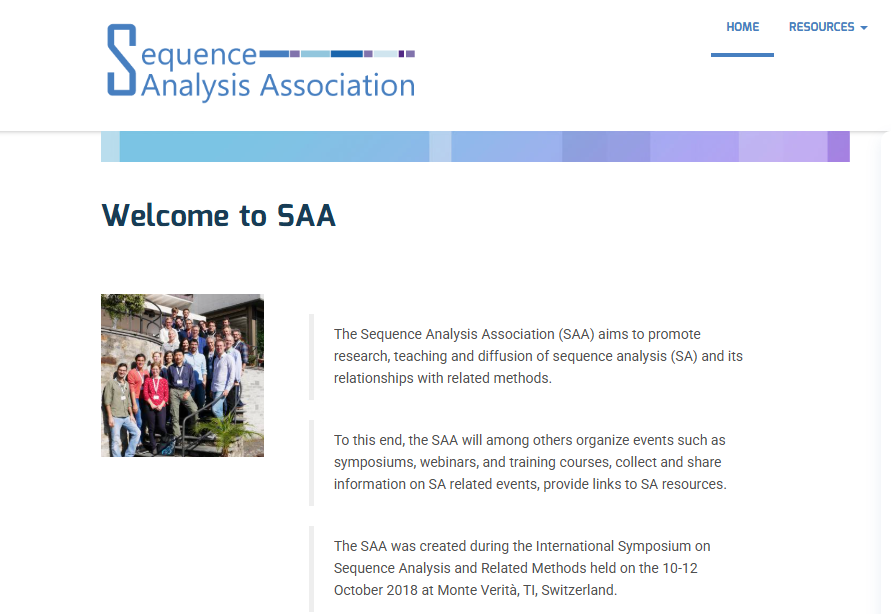Introduction
How can businesses leverage AI advancements to gain a competitive edge? This question has often felt like a riddle to me. Simply relying on publicly available, generic AI models fails to provide real differentiation—after all, everyone has access to the same tools. Recently, I came across a post by Professor Varun Grover that offered a compelling solution ( https://www.linkedin.com/pulse/quick-thoughts-ai-competitive-advantage-varun-grover-umuac/).. According to Grover, competitive advantage in AI hinges on leveraging it in ways that are difficult for competitors to replicate. This typically involves:
- Unique Data: Proprietary data sets that competitors cannot easily acquire.
- Deep Process Integration: Seamlessly embedding AI into core operations, making it integral to workflows and decision-making.
- Continuous Learning: Regularly retraining and refining models to adapt to changing business environments and evolving market demands.
A practical way to achieve this is by fine-tuning open-source or foundational AI models with proprietary data. By doing so, organizations create specialized solutions perfectly aligned with their unique needs—an approach that not only streamlines workflows but also establishes a defensible competitive edge.
The rapid evolution of artificial intelligence (AI) is transforming the business landscape, presenting both challenges and opportunities for firms seeking to maintain a competitive edge. Fine-tuning foundational or open-source AI models with proprietary data has emerged as a powerful strategy for achieving sustained competitive differentiation and improved business performance. This approach allows businesses to leverage the capabilities of pre-trained AI models while tailoring them to their specific needs and industry contexts. This report delves into the concept of fine-tuning, explores its impact on business performance, examines real-world case studies, analyzes the benefits and drawbacks, and considers the long-term sustainability and ethical implications of this approach.
Defining Fine-Tuning
Fine-tuning in machine learning is a process where a pre-trained AI model is further trained on a smaller, more targeted dataset to improve its performance on a specific task. This is in contrast to building a model from scratch, which can be resource-intensive. Instead, fine-tuning takes advantage of the knowledge a model has already gained from being trained on a large, general-purpose dataset. This process involves adjusting the model’s parameters using a smaller, domain-specific dataset, effectively specializing the model for a particular application.
Foundational models, also known as base models, are AI models trained on a massive dataset of text and code. These models learn general-purpose representations and functionalities that can be adapted to a wide range of downstream tasks. Fine-tuning allows businesses to adapt these foundational models to their specific needs and data, leading to improved performance and efficiency.
Data Preparation for Fine-Tuning
Before initiating the fine-tuning process, it’s crucial to understand the significance of dataset formats and how they influence the model’s learning. The format of the dataset, whether it’s text or code, plays a vital role in how effectively the model can learn and adapt to the new information. For instance, structuring text data with clear markers for different elements like instructions, context, and desired output can significantly improve the model’s ability to understand and generate relevant responses. Similarly, for code-based datasets, organizing the code into meaningful segments and providing clear annotations can enhance the model’s ability to learn coding patterns and generate accurate code.
Impact on Business Performance
Fine-tuning AI models with proprietary data can significantly impact business performance across various dimensions:
- Improved Accuracy and Relevance: Fine-tuned models demonstrate higher accuracy and relevance in their predictions and outputs. This is crucial in applications where precision is paramount, such as financial forecasting, risk assessment, and medical diagnostics. For example, in finance, a model fine-tuned on a company’s historical financial data can provide more accurate predictions of future market trends, enabling better investment decisions.
- Enhanced Customer Experience: By tailoring AI models to understand customer preferences and behaviors, businesses can deliver personalized experiences, leading to increased customer satisfaction and loyalty. For instance, a retail company can fine-tune a recommendation system using customer purchase history and browsing data to provide more relevant product suggestions, increasing sales and customer engagement.
- Increased Efficiency and Productivity: Fine-tuned models can automate tasks, streamline workflows, and optimize processes, leading to significant gains in efficiency and productivity. In manufacturing, a model fine-tuned on production data can predict equipment failures, enabling proactive maintenance and reducing downtime.
- Innovation and New Product Development: Fine-tuning enables businesses to develop innovative AI-powered products and services tailored to specific market needs, creating new revenue streams and expanding market reach. For example, a healthcare company can fine-tune a language model on medical research data to develop a virtual assistant that provides personalized health advice to patients.
- Data-Driven Decision Making: Fine-tuned models can analyze complex datasets and extract valuable insights, empowering businesses to make informed decisions and gain a competitive advantage. In marketing, a model fine-tuned on customer demographics and campaign performance data can identify the most effective marketing channels and optimize ad spending7.
- Versatility in Task Performance: Fine-tuning allows businesses to adapt models for a wide range of tasks, including sentiment analysis, question answering, and document summarization. This versatility enables companies to leverage AI for various applications, from analyzing customer feedback to automating research tasks.
Ethical Implications
Using proprietary data to fine-tune AI models raises ethical considerations that businesses must address:
- Privacy and Confidentiality: Protecting the privacy and confidentiality of individuals and entities represented in the proprietary data is paramount. For example, a financial institution utilizing an LLM to automate customer communications could inadvertently expose sensitive customer data if the model was fine-tuned with datasets containing unredacted personally identifiable information (PII). This could not only breach trust but also potentially violate data protection regulations.
- Bias and Fairness: Ensuring that the fine-tuned model does not perpetuate or amplify biases present in the proprietary data is crucial. If the training data reflects historical biases, the model could produce discriminatory outcomes, hindering diversity and inclusion efforts.
- Transparency and Accountability: Businesses should be transparent about how they use proprietary data for fine-tuning and ensure accountability for the model’s outputs. This includes providing clear explanations of the model’s decision-making processes and establishing mechanisms for addressing potential biases or errors.
Benefits of Fine-Tuning with Proprietary Data
Fine-tuning AI models with proprietary data offers several key benefits:
- Enhanced Performance: Fine-tuning leads to significant performance improvements on specific tasks, surpassing the capabilities of generic pre-trained models. This allows businesses to achieve higher accuracy, efficiency, and effectiveness in their AI applications.
- Reduced Costs and Time-to-Market: Fine-tuning leverages existing models, reducing the need for costly infrastructure and shortening the development cycle. This allows businesses to deploy AI solutions faster and with lower investment.
- Data Privacy and Security: Fine-tuning can be performed on-premises, ensuring the privacy and security of sensitive proprietary data. This is particularly important for businesses dealing with confidential customer information or sensitive intellectual property.
- Customization and Flexibility: Fine-tuning allows businesses to tailor AI models to their unique needs and industry contexts. This enables them to address specific challenges, optimize processes, and develop innovative solutions that align with their business goals.
- Bias Mitigation: Fine-tuning with carefully curated proprietary data can help mitigate biases present in general-purpose datasets. This allows businesses to create fairer and more inclusive AI systems that avoid perpetuating harmful stereotypes or discriminatory practices.
- Cost-Effectiveness: Fine-tuning significantly reduces the need to invest in costly infrastructure for training models from scratch. By leveraging pre-trained models, organizations can achieve faster time-to-market with reduced inference latency, as the model is more efficiently adapted to specific use cases7.
By fine-tuning AI models with proprietary data, companies can move beyond being mere “buyers” of AI, simply utilizing off-the-shelf tools. Instead, they become “boosters” by integrating available models with their unique data and ultimately “builders” of their own customized AI solutions. This transition empowers businesses to create a unique competitive advantage by developing AI capabilities that are specifically tailored to their needs and industry contexts.
Drawbacks and Challenges
Despite its advantages, fine-tuning with proprietary data also presents some challenges:
- Data Requirements: Fine-tuning requires a sufficient amount of high-quality proprietary data, which may not always be readily available. For example, a small startup might struggle to gather enough data to fine-tune a model for a niche application, limiting the effectiveness of this approach16.
- Expertise and Resources: Fine-tuning requires specialized expertise and computational resources, which can be a barrier for some businesses. Companies may need to invest in training their staff or hiring AI specialists to effectively implement fine-tuning techniques.
- Overfitting: Overfitting can occur if the model is trained too specifically on the proprietary data, leading to poor performance on new, unseen data. This can happen if the proprietary dataset is too small or not representative of the real-world scenarios the model will encounter.
- Catastrophic Forgetting: During fine-tuning, there’s a risk of “catastrophic forgetting,” where the model loses some of its previously learned general knowledge while adapting to the new, specialized data. This can negatively impact the model’s overall performance and ability to handle diverse tasks.
- Maintaining Model Accuracy: As proprietary data evolves, the fine-tuned model may require regular updates and retraining to maintain its accuracy and relevance. This can be an ongoing challenge, requiring businesses to continuously monitor and adapt their AI models to changing data and market conditions.

Achieved top rankings in text-to-SQL benchmarks, demonstrating improved data analysis capabilities
Sustaining Competitive Differentiation
The long-term sustainability of competitive differentiation achieved through fine-tuning depends on several factors:
- Data Quality and Quantity: Continuous access to high-quality proprietary data is crucial for maintaining the model’s competitive edge. Businesses need to establish robust data collection and management processes to ensure a steady flow of relevant data for fine-tuning and model updates.
- Adaptability and Continuous Improvement: Businesses need to adapt their fine-tuned models to evolving market dynamics and technological advancements. This requires ongoing monitoring of model performance, regular retraining with updated data, and exploration of new fine-tuning techniques.
- Integration with Business Processes: Effective integration of fine-tuned models into core business processes is essential for realizing their full potential. This involves aligning AI capabilities with business goals, streamlining workflows, and ensuring seamless data exchange between AI systems and other business applications.
- Ethical Considerations: Addressing ethical implications, such as bias and fairness, is crucial for long-term sustainability and responsible AI development. Businesses need to establish ethical guidelines for data collection, model development, and deployment, ensuring that their AI systems are used in a fair, transparent, and accountable manner20.
Here are some key areas where these models can be particularly impactful:
Fine-tuned open-source models can be applied to a wide range of business operations to improve efficiency, productivity, and decision-making. Here are some key areas where these models can be particularly impactful:
Customer Service
- Personalized responses: A telecommunications company can fine-tune a language model on their customer interaction history, including call transcripts and support tickets. This allows the model to understand customer preferences and provide tailored responses, leading to increased customer satisfaction and reduced churn .
- Automated troubleshooting: A software company can fine-tune a model on their product documentation and knowledge base. This enables the model to provide step-by-step guidance to customers experiencing technical issues, resolving problems more efficiently and reducing the workload on human support agents .
Sales and Marketing
- Targeted advertising: An e-commerce company can fine-tune a model on their customer purchase history and browsing behavior. This allows the model to predict which products are most likely to appeal to individual customers, enabling highly targeted advertising campaigns and personalized product recommendations .
- Lead qualification: A B2B company can fine-tune a model on their sales data and lead interactions. This allows the model to identify and prioritize high-potential leads, improving sales efficiency and increasing conversion rates .
Human Resources
- Resume screening: A large corporation can fine-tune a model on their historical hiring data, including resumes, interview feedback, and performance reviews. This allows the model to automatically screen resumes and identify candidates who best match the requirements of a specific role, saving time and improving the quality of hires .
- Personalized onboarding: A company can fine-tune a model on their internal documentation, policies, and training materials. This allows the model to provide personalized onboarding experiences for new employees, answering their questions and guiding them through the company’s processes and culture .
Operations and logistics:
- Fine-tuned models can optimize supply chain management, predict demand fluctuations, and improve logistics efficiency. This can lead to reduced costs, improved delivery times, and increased operational efficiency . For example, a model can be fine-tuned to predict inventory needs, optimize delivery routes, or identify potential disruptions in the supply chain.
Finance and accounting:
- Fine-tuned models can automate financial processes, detect fraud, and assess risk. This can improve accuracy, efficiency, and compliance in financial operations . For example, a model can be fine-tuned to analyze financial data, identify anomalies, and predict potential financial risks.
Product development:
- Fine-tuned models can analyze customer feedback, market trends, and competitor data to identify unmet needs and guide product development. This can lead to the creation of innovative products and services that better meet customer demands . For example, a model can be fine-tuned to analyze customer reviews, identify product gaps, and generate ideas for new product features.
These are just a few examples of how fine-tuned open-source models can be applied in practice. The key is to identify specific business challenges and use proprietary data to train models that address those challenges effectively.
Conclusion
Fine-tuning foundational or open-source AI models with proprietary data offers a compelling pathway for businesses to achieve sustained competitive differentiation and improved business performance. By tailoring AI models to their specific needs and industry contexts, businesses can unlock new levels of efficiency, innovation, and customer satisfaction. However, it is essential to address the challenges and ethical implications associated with this approach to ensure responsible and sustainable AI development.
Looking ahead, the use of open-source models for fine-tuning is expected to increase, providing businesses with more flexibility and cost-effective options for developing customized AI solutions20. Furthermore, advancements in fine-tuning techniques, such as prompt engineering and parameter-efficient fine-tuning methods, will enable businesses to achieve even greater performance improvements with less data and computational resources19. As AI continues to evolve, fine-tuning with proprietary data will likely play an increasingly critical role in shaping the competitive landscape across industries.
Works cited
1. What is fine-tuning in AI? | Definition and best practices – Telnyx, accessed January 14, 2025, https://telnyx.com/resources/what-is-fine-tuning-ai
2. www.ibm.com, accessed January 14, 2025, https://www.ibm.com/think/topics/fine-tuning#:~:text=Fine%2Dtuning%20in%20machine%20learning,models%20used%20for%20generative%20AI.
3. Fine tuning LLMs for Enterprise: Practical Guidelines and Recommendations – arXiv, accessed January 14, 2025, https://arxiv.org/html/2404.10779v1
4. Fine-Tuning OpenAI GPT Models For Specific Use Cases – CustomGPT.ai, accessed January 14, 2025, https://customgpt.ai/openai-gpt-fine-tuning-cases/
5. OpenAI Fine-Tuning: Community Experiences and Insights – PingCAP, accessed January 14, 2025, https://www.pingcap.com/article/openai-fine-tuning-community-experiences-and-insights/
6. My finetuned models beat OpenAI’s GPT-4 | Hacker News, accessed January 14, 2025, https://news.ycombinator.com/item?id=40843848
7. Understanding Fine-Tuning in AI and ML | Databricks, accessed January 14, 2025, https://www.databricks.com/glossary/fine-tuning
8. Navigating the Privacy Paradox: A Guide to Ethical Fine-Tuning of Large Language Models, accessed January 14, 2025, https://www.private-ai.com/en/2023/10/20/ethical-fine-tuning-of-llms/
9. Ethical Considerations in AI Model Development – Keymakr, accessed January 14, 2025, https://keymakr.com/blog/ethical-considerations-in-ai-model-development/
10. Fine-Tuning Large Language Models: Ethical and Social Implications – GPTutorPro, accessed January 14, 2025, https://gpttutorpro.com/fine-tuning-large-language-models-ethical-and-social-implications/
11. Fine-tuning open source models: why is it relevant now? – Vellum AI, accessed January 14, 2025, https://www.vellum.ai/blog/fine-tuning-open-source-models
12. Fine Tuning in Generative AI For Application Development | Blog – Cubet, accessed January 14, 2025, https://cubettech.com/resources/blog/fine-tuning-in-generative-ai-how-it-can-help-in-application-development/
13. Synthetic Data: Benefits and Techniques for LLM Fine-Tuning in 2024 | Label Your Data, accessed January 14, 2025, https://labelyourdata.com/articles/llm-fine-tuning/synthetic-data
14. Carving Out Your Competitive Advantage with AI | by Dr. Janna Lipenkova, accessed January 14, 2025, https://towardsdatascience.com/carving-out-your-competitive-advantage-with-ai-a4babb931076
15. Competing in the age of AI: Rethinking competitive strategy | GravityThink, accessed January 14, 2025, https://gravitythink.com/blog/ai-competitive-business-strategy/
16. The Risks and Challenges of using Proprietary Data for Fine-Tuning – Lampi.ai, accessed January 14, 2025, https://blog.lampi.ai/the-risks-and-challenges-of-using-proprietary-data-for-fine-tuning/
17. LLMs for Business: Fine-Tuning and Risks – Serokell, accessed January 14, 2025, https://serokell.io/blog/llms-fine-tuning-avoiding-risks
18. Fine-Tuning Open Source Language Models: Enhancing AI solutions for your unique needs, accessed January 14, 2025, https://medium.com/@abhilasha.sinha/fine-tuning-open-source-language-models-enhancing-ai-solutions-for-your-unique-needs-93e521fa6124
19. Competitive Advantage in the Age of AI – California Management Review, accessed January 14, 2025, https://cmr.berkeley.edu/2024/10/competitive-advantage-in-the-age-of-ai/
20. Competition Between AI Foundation Models: Dynamics and Policy Recommendations – MIT Initiative on the Digital Economy, accessed January 14, 2025, https://ide.mit.edu/wp-content/uploads/2024/01/SSRN-id4493900.pdf?x41178










Leave a Reply